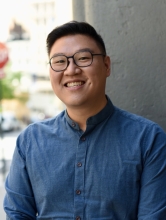
INTRODUCTION
In this white paper, authored by Sebastian Cherng and staff from the Center for Research and Evaluation at Metro Center, we do not treat immigrant youth as monolithic, understanding that there is no one immigrant story and, therefore, can be no one immigrant pedagogy or curriculum, policy or program for the matter. Rather, the conversation on demographic change and immigration in New York City and our nation is complex. Thus the conversation on educating U.S. immigrant youth must also be complex . . . and more, it must become courageous.
SUMMARY OF RESULTS
- Between 2000 and 2013, the foreign-born population in New York City increased by nearly seven percent.
- The three largest immigrant groups in the city - Dominicans, Chinese, and Mexicans - all experienced disparate rates of change during this time period 7.
- The largest immigrant group, Dominicans, grew by about four percent. Meanwhile, Chinese-born residents increased by 35 percent and Mexican-born residents increased by 49 percent during the same time period, far exceeding the city-wide increase.
- There are neighborhoods across New York City that, in the last 13 years, have experienced exceptional growth in the foreign-born population.
- The recent settlement patterns of the three largest groups shared only minimal overlap in terms of the boroughs and neighborhoods in which they choose to live.
- Since 2000, the Chinese-born population increased significantly in Queens and the southeast area of Brooklyn. Growth in the Dominican-born population occurred almost exclusively in the Bronx - especially the far northern areas of the borough.
- Growth in the Mexican-born population was more widespread than growth in the other two groups, with all five boroughs experiencing at least some increase in the Mexican population.
- The Mexican population grew most dramatically in the southern and central areas of the Bronx, with several neighborhoods in the area experiencing growth of 200 percent or more since 2000.
- Mexican residents also tended to settle in the northern shore of Staten Island and the East Elmhurst area of Queens.
IMPLICATIONS FOR NEW YORK CITY SCHOOLS
How might these demographic shifts impact schools in areas with large influxes of recent immigrants? Schools with growing immigrant populations must be adequately prepared to work with students who do not speak fluent English and provide support for students and parents in their native language. According to a 2014 brief from the New York City Independent Budget Office, 59 percent of New York City teachers in 2011-12 were White, 20 percent were Black, 14 percent were Hispanic, and 6 percent were Asian. In the same year, according to the New York City Department of Education (2015), 15 percent of New York City students were White, 29 percent were Black, 40 percent were Hispanic, and 15 percent were Asian. Clearly, the demographics of New York City teachers do not match that of the existing student population, and new waves of immigrants will likely increase this disproportionate representation. To prepare teachers to work with newcomers, we must ask how might schools offer teachers professional development opportunities that focus on culturally responsive education and teaching methods for immigrants and English Language Learners.
Link to the report
A detailed report on the implications on pedagogy and curriculum due to the demographic change and immigration in New York City .
Download the report

